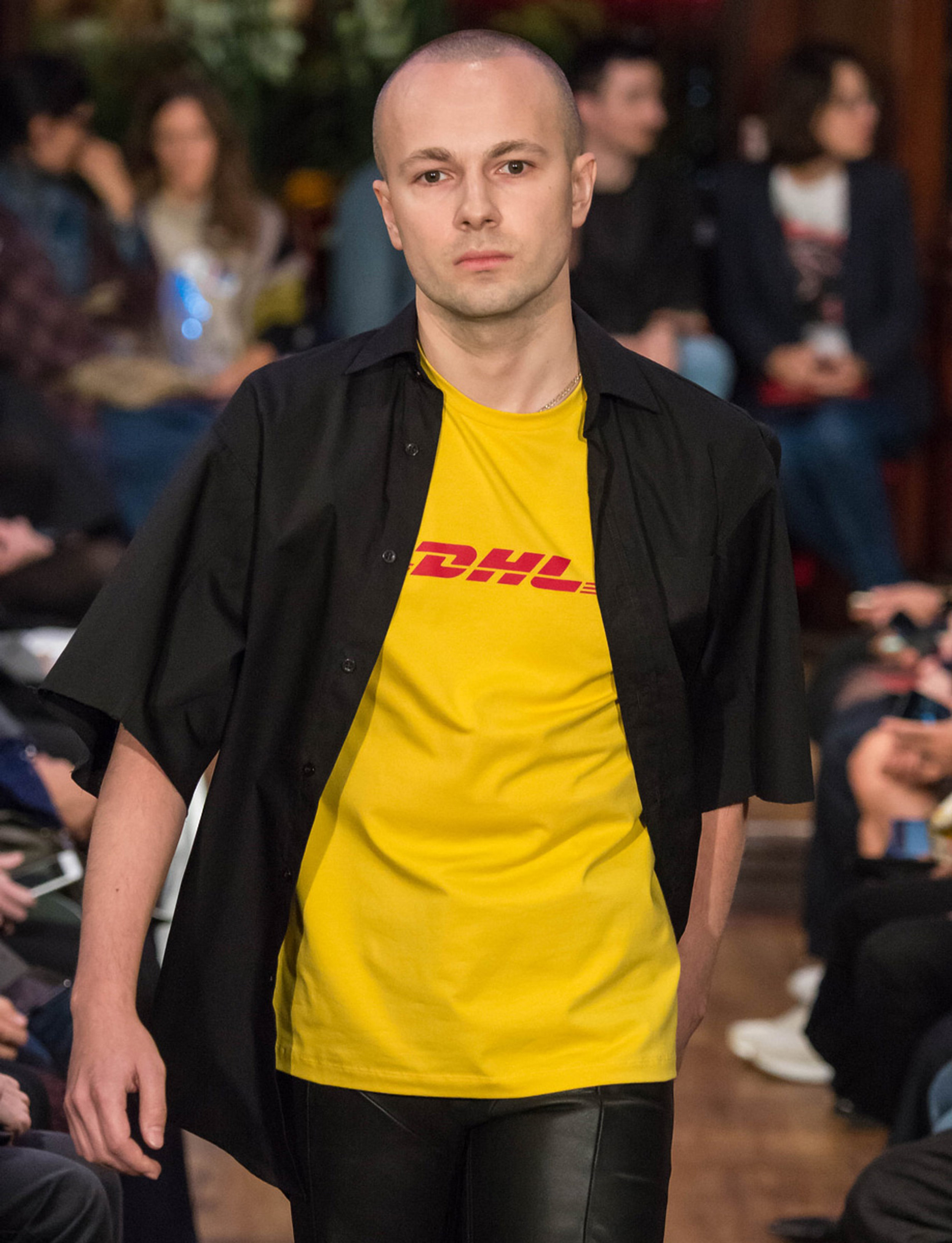Bootleg Culture: The Evolution of Fashion

Think Piece
Words by Kendra Hunsley
A vintage oasis nestled between fabrics and furniture stores that sits atop a popular street food market in Seoul, South Korea was my fashion fix of choice a few years ago. Clothing stretched further than my eyes could see - resulting in me being extremely overwhelmed by the opened boutiques and stalls that had just enough space in between for a single person to pass through at a time. I came across a vintage Tommy Hilfiger jacket that immediately caught my eye while I had my cart in tow. I was just about ready to conclude my shopping expedition for the day when I put the jacket on, took it off, put it back on and then took a picture wearing it. I typed the description of the jacket in the search bar to see if Google could help me authenticate it considering the fact that the store owner could not ease my conscience with tangible proof. The more I looked at it, the more I wanted it. I thought about all the different ways I could style it but I ended up leaving the jacket. This was not because I had a change of heart or because the price point was a bit over my budget. I left it because at the end of my Google search and after putting the store owner on the stand, I was not given satisfying confirmation from both parties that the jacket was in fact what it said it was.
While I went back and forth on whether I should make the purchase or not, I thought about the serious repercussions that could be faced with if the jacket was indeed fake. I thought about how people might ridicule and mock me; I thought about how I would be seen as a fraud. Of course while those incidents are highly unlikely, there is the off chance that someone would go out of their way to verify an item somebody else is wearing. That said, I still couldn’t bring myself to make the purchase. Does my fear of being caught dead in a fake item of clothing have more to do with my unrelenting concern of what other people might think of me? Is there a sense of courage and self-assuredness that I lack when it comes to going against the grain and wearing a fake item of clothing? Some may view it that way, some may not. Either way, you cannot deny the gutsy nature of it. Counterfeiting and Bootlegging can often band together however, one can make a distinction between the two. Counterfeiting refers to something that is “made in imitation of something else with intent to deceive.” Bootlegging on the other hand is the act of “producing, reproducing, or distributing illicitly or without authorization.” In fashion specifically, the marvellous art of bootlegging occupies a grey area because it is often disguised as paying homage - without managing to control how the public or brand being bootlegged decides to react. Dapper Dan experienced this first-hand in 1992 when he was forced to close down his boutique doors. The man popularly known as ’The Hip Hop Tailor of Harlem’ put his own spin on luxury items and created original designs using logos from luxury fashion houses namely Fendi, Gucci and Louis Vuitton.
Dapper Dan’s Louis Vuitton logo print fur bomber jacket
During the 80s and 90s, luxury brands were not catering to the African-American demographic and the urban market at large which resulted in people like Dan taking matters into their own hands and creating an opportunity for Black people to own a piece of luxury. Dan served athletes, gangsters, rappers and anyone who could afford his custom made, one-of a kind designs. Today, Dapper Dan and Kering’s golden-child Gucci have joined forces. The partnership did not come adorned with bells and whistles. For the Gucci Cruise 2018 Collection - a fur gilet with large puffy sleeves came down the runway. It had a striking resemblance to the custom gilet Dapper Dan created for Olympian Diane Dixon back in 1988. The brand faced backlash as the events leading up to the closure of Dan’s store was reflected upon. This then struck a nerve with many. Whether the collaboration came into fruition sparked by the public outcry is unknown. Perhaps the brand had already planned to reach out to him. Whichever way you slice it, the culture is just happy that Dapper Dan finally got his acknowledgment.
Gucci Cruise 2018 Collection
The collaboration between Louis Vuitton and Supreme is another apt example of the ever-changing tides in fashion. In 2000, Supreme created beanies, t-shirts and skate decks embellished with Louis Vuitton’s monogram. A cease and desist from Louis Vuitton arrived swiftly after. Fast-forward to 20 years later; the Supreme x Louis Vuitton collaboration remains to be one of the most talked about collaborations - generating fashion think pieces on almost every corner of the internet and social media posts with streetwear enthusiasts and luxury folk arguing about its pros and cons as well as “what it means for the culture”.
As a result of social media and the democratization of fashion, anyone with an internet connection and social media account can showcase their creative portfolio and garner attention from the public and the very same brands that they use as their canvas for DIY projects. Millennial bootleg artists are popping up faster than new sneaker drops and have answered the call to the monotonous and pedestrian aesthetic of the industry that lack off-center trimmings and fail to amass excitement.
Ava Nirui is a 26-year-old Australian and New York transplant who puts her own sauce on designer items. The Vetements x Champion collaboration included a sweatshirt that retailed for $700. Enamoured by the sweatshirt, but not enough to fork out $700 to purchase it, Ava took matters into her own hands and created her own version. A black champion hoodie with Comme des Garçons embroidered on it using the brands iconic C logo. She posted it to her Instagram feed which resulted in multiple requests about where to purchase it. Since then, she has partnered with many esteemed brands and institutions like Marc Jacobs and the Museum of Modern Art. While still creating fresh and off-kilter bootleg designs, she also holds the title of Digital and Social Editor for Helmut Lang. Brands have not only sought to collaborate with bootleg artists but have started bootlegging themselves - tapping into the current meme culture and logo crazed trend with the hopes of staying relevant to the cool kids and also pre-empt being bootlegged. Designer and Bootleg King Demna Gvasalia is no stranger to this tactic. Often creating nonsensical items with exorbitant price points that have no difficulty selling out. An item that may come to mind is the DHL t-shirt that was on every street style blog and fashion publication. The shirt sold out in weeks and retailed for £185.
The thrill and excitement that comes with taking an item, stripping it apart and creating something new is undeniable; which is why people want these one-of-a-kind pieces that bootleggers offer. There is a vast difference between rocking a fake Tommy Hilfiger jacket that poses as an original and flipping a logo to make it your own. One is an act of deception while the latter is a bold statement; a sense of rebellion towards the highfalutin nature of the luxury fashion industry. It is a declaration that fashion should not take itself so seriously and should be experienced by everyone and anyone.





